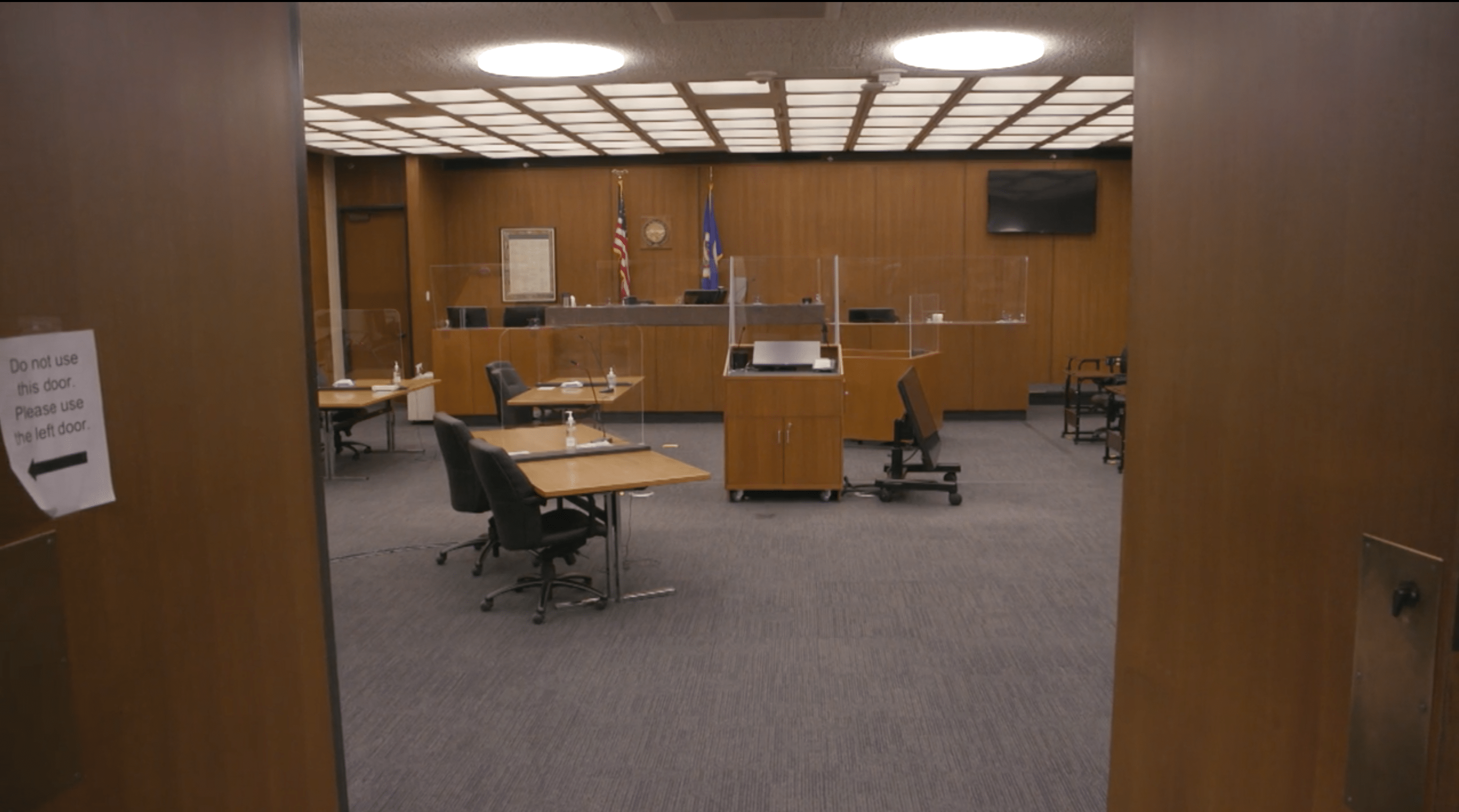How jurors will be picked in the Derek Chauvin trial

Go Deeper.
Create an account or log in to save stories.
Like this?
Thanks for liking this story! We have added it to a list of your favorite stories.
Updated: March 19, 6:46 p.m. | Posted: March 8, 5:30 a.m.
Jury selection began March 9 in the trial of former Minneapolis police officer Derek Chauvin in the killing of George Floyd.
Chauvin is currently facing charges of second-degree unintentional murder and second-degree manslaughter.
The goal of jury selection is to whittle the pool of potential jurors to a group that can fairly assess the charges against a defendant. Jurors will be tasked with deciding whether the state has proven their guilt beyond a reasonable doubt.
Reporting for jury duty
In Minnesota, jurors are chosen at random from lists of people who have obtained identification cards, driver's licenses and have registered to vote. Potential jurors receive a notice in the mail that they've been chosen. They are told to arrive at a court building on a certain date and time.
Turn Up Your Support
MPR News helps you turn down the noise and build shared understanding. Turn up your support for this public resource and keep trusted journalism accessible to all.
A potential juror may be excused from jury duty for a number of reasons, including that they're unable to communicate in English or have not yet had their civil rights reinstated after being convicted of a felony. They may also try to postpone their service.
Not showing up for jury duty is a misdemeanor in Minnesota.
The original group that's convened for a trial is called the "jury pool." Not all these people will make it to the end of the process.
The juror questionnaire
Beginning in late December, prospective Hennepin County jurors were mailed 14 pages of questions to answer. The questionnaire covers everything from their knowledge of the case to attitudes about police and racial discrimination to the court system and the media.
Jury instruction
Prospective jurors will be brought into the court building and interviewed by attorneys and the judge. They'll be instructed about the rules they must abide by during the trial. They will be told they can't discuss the trial with anyone, including fellow potential jurors, until they're seated on the jury. They also may be ordered not to consume any media or social media about the case or to investigate any details of it online.
The judge's role is to ensure that only what's deemed by the court as credible and relevant information makes it to the jurors.
Why some are excused

Attorneys from both sides will use the information in the questionnaires to try to assess where the potential jurors may respond to their arguments during trial. It's normal for attorneys to look into jurors' backgrounds. During the trial of former St. Anthony police officer Jeronimo Yanez in 2017, prosecutors printed out social media posts of some potential jurors characterized as expressing pro-law enforcement sentiments. They also may look into public records, such as criminal histories.
A potential juror is then brought into the courtroom. This is called voir dire (pronounced vwar-deer). The attorneys can question potential jurors about their experiences, beliefs and biases. If the attorneys from either side come to the conclusion that a possible juror would not be able to fairly and impartially serve on the jury, they ask the judge to excuse that potential juror for cause. The attorneys on the opposite side can contest the request. The judge rules whether to excuse the potential juror or not.
The judge in the Chauvin case is Peter Cahill.
Seating a jury
After the jury pool is reduced through eliminating potential jurors for cause, the attorneys on both sides can use what's called a "peremptory challenge," which allows them to strike members of the pool without cause, although the challenges can’t be used to eliminate potential jurors on the grounds of race, ethnicity, religion or gender.
Chauvin’s attorneys will get 15 peremptory challenges and prosecutors will have nine challenges.
The goal of this process is to narrow the pool until it reaches the appropriate number.
The court will seat as many as 16 jurors in the trial, including up to four alternates, a Hennepin County District Court spokesperson said. Jury members won’t know until deliberations start whether they’re an alternate.
What will it be like to serve on the jury?
Judge Cahill has said in rulings that the public interest in the trial, and some actions of protesters, give him strong reasons to believe that “threats to jurors’ safety and impartiality exist.”
The identity of prospective jurors will be kept secret until the judge releases them after the trial. Jurors will be partially sequestered during the trial, and escorted from a secure location to a courtroom in the Hennepin County Government Center. They’ll be fully sequestered during deliberations.
In an unprecedented move for Minnesota, Cahill is allowing the trial, including jury selection, to be livestreamed. But in an order, he said there will be no video of any juror or potential juror at any time during the trial.
How long will jury duty in the trial last?
Jury selection could last up to three weeks. Opening statements in the trial are scheduled for March 29. Prosecutors will present their case against Chauvin, followed by defense attorneys.
After each side presents its closing argument, the jury will go into deliberations until they reach a verdict on each count. If past trials are any indication, the whole process could take up much of April.


